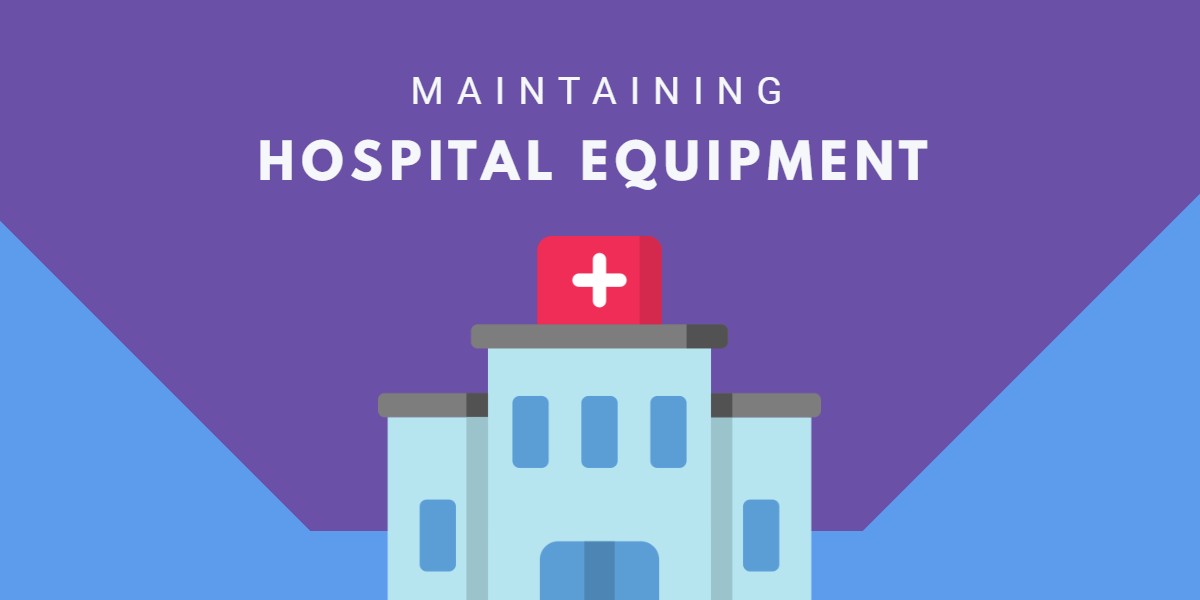The surmounting need for better medical equipment maintenance
Hospitals around the globe are witnessing a surge in patient inflow. Consequently, there is a rising need for maintaining hospital equipment and providing improved diagnostic facilities.
Following this trend, the medical equipment and maintenance services industry has grown by 1.7% to reach a revenue of $3 billion. Better healthcare services cannot be provided with incompetent equipment management.
While the statistics promise consistent growth, the healthcare industry struggles every day with hospital equipment maintenance. So, why is this the case?
Medical institutions and biomedical engineers face multiple challenges every day when designing maintenance services.
1. Coordinating service schedules: With various types of medical devices up for performance inspection, tracking service requirements can be overwhelming. This is especially true in cases where biomedical engineers have to handle equipment across facilities. Coordinating schedules need special attention for the following reasons:
- Manufacturers differ in service recommendations
- The clinical staff doesn’t follow timelines for sending equipment to manufacturers
- Not all medical assets have the same preventive maintenance needs.
2. Obtaining manufacturer support: Most of the time, biomedical engineers are able to diagnose equipment problems and troubleshoot them on the spot. But, in some cases, medical technicians lack familiarity with key machine components. This means that engineers have to contact equipment manufacturers for support which is problematic without vendor records or warranty cards. Missing equipment data ends up disrupting maintenance schedules.
3. Arranging for replacement parts: Securing spare parts for faulty equipment often becomes a hurdle in the way of efficient maintenance routines. Vendors might discontinue the production of a certain component or miscalculate the demand, resulting in component unavailability. In these cases, it helps to pre-plan service schedules so last minute disruptions can be avoided.
Streamline hospital equipment maintenance with asset management

Most healthcare organizations opt for an automated management system. Choosing such a program enables you to gather accurate information and increase overall operational efficiency. In addition to this, the software allows you to track critical records and improve task delegation.
Now, let’s see how you can use asset management to establish a rock-solid maintenance program for your inventory.
1. Inventory management
When managing a hospital, start off by documenting all assets in stock so you can plan maintenance activities around them. Tag different pieces of medical equipment by type and enter them into an online management system.
This way, each device has its own unique ID and can be tracked easily. In addition to this, use barcode labels to record relevant details against each asset.
Automated data entry lowers the risk of human error so hospitals can retain accurate data at all times. To simplify the process, break up inventory into different categories like imaging equipment, devices integrated with IT, or consumables like fluids and medication.
Furthermore, your inventory needs to be as comprehensive as possible. In addition to asset serial numbers, add data regarding the availability of alternate devices, failure frequency, and downtime and repair costs.
Adding customized fields is easier when using a robust medical equipment management system.
2. Maintenance schedules
Medical equipment maintenance covers the repair of assets as well as the sterilization of instruments. To avoid the spread of bacteria and infections, hospitals must proactively plan service schedules.
Employ equipment management software to generate service tickets for equipment maintenance as soon as you purchase the assets. Such a solution enables you to implement preventive maintenance so you can eliminate chances of sudden breakdowns.
Moreover, supply technicians with a list of reliable vendors from your database for specialized maintenance facilities.
3. Regular audits

Apart from scheduling regular maintenance events, meeting compliance regulations is extremely critical for hospitals. Non-compliance can lead to:
- Health hazards for patients and doctors: Compromising on compliance means compromising on medical equipment safety. Non-compliant equipment can pose a health risk for anyone coming in contact with the device, be it a patient, a doctor or a member of the hospital staff.
- Penalties from regulatory bodies: The FDA has laid down fundamental quality guidelines for the healthcare industry. For this reason, the Quality Care Program 2011 serves to help hospitals maintain their equipment up to the mark. The cost of non-compliance is considerably high and most medical centers can’t afford penalties and lengthy lawsuits.
Set up a compliance program at your hospital by studying current industry guidelines and be sure to follow them. Periodic audits are extremely useful in this pursuit as they help flag compliance issues that go unnoticed.
An equipment maintenance system enables you to conduct regular audits so you can verify the status of your entire inventory and ensure medical equipment safety at all times.
4. Lifecycle management
Tracking a medical asset throughout its useful life will enable you to streamline all maintenance processes for it. Automate lifecycle management with a software program and trace out usage history for all types of equipment.
This way, you can easily access complete service data for each individual asset, from the moment of procurement to retirement. Lifecycle management also makes timely disposal possible for all your machines.
In this manner, you can avoid breakdowns that occur in the middle of daily operations. Moreover, you can also save money by retiring old machinery or selling it at salvage value instead of scheduling large-scale repairs. Get replacements at the right time!
5. Actionable reports

In-depth data analysis enables you to gauge hospital equipment performance. For this purpose, stress upon the importance of diligent data logging to hospital staff so anyone using a device knows that they have to update its status.
Recording these usage trails is much simpler with software that also provides data regarding maintenance history, depreciated value, and current stock levels for all your machines.
With these statistics, biomedical engineers prepare actionable reports to examine equipment rate of return and general trends in asset management. Such reports also help spot any areas which need improvement.
For instance, if you discern the maintenance costs rising continually for a syringe pump, you can initiate an investigation. It may be smart to replace the pump rather than carry out an extensive repair on it.
Everyday equipment management problems solved with medical management software
More and more industries are realizing the benefits of business automation, and manual processes are petering out. Healthcare is one such industry that is seeing a solid rise in the adoption of software solutions like equipment management software for maintaining hospital equipment.
Such systems provide complete management capabilities to hospitals, including asset tracking, equipment maintenance, vendor and staff management, and compliance regulation.
These solutions also enable biomedical engineers to design preventive maintenance routines to prevent untimely breakdowns. In addition to this, modern healthcare organizations organize audits to gain compliance and track the entire lifecycle of assets.
They also use the software to access real-time data regarding their assets which makes annual reporting simpler and more accurate.
Read more: 5 Ways Asset Tracking for Hospitals is Different from Regular Asset Tracking
About EZOfficeInventory
EZOfficeInventory is a medical equipment management system that makes maintaining hospital equipment a breeze! You can also track all your machines, conduct audits, ensure compliance, and manage staff users so your equipment is always in top shape!







